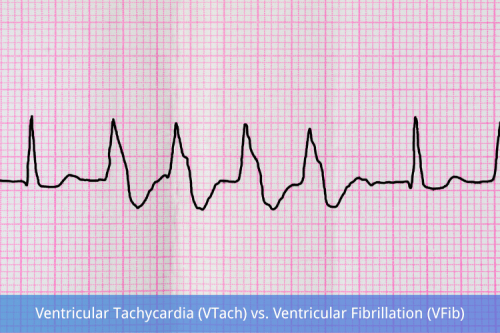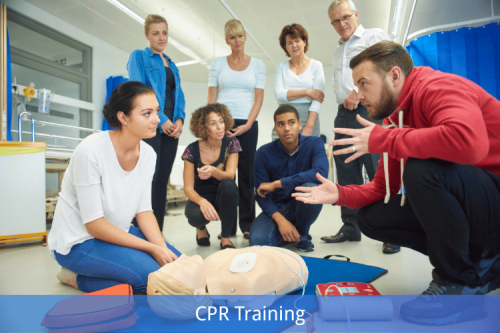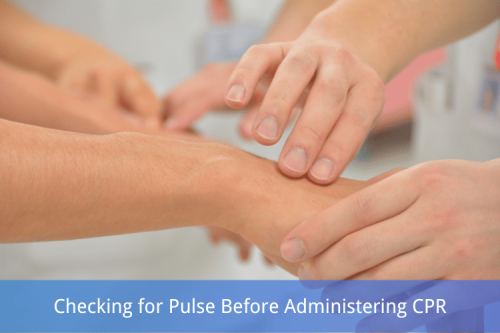
Each second matters when a baby chokes on something while crying, and being ready to help can be the deciding factor between life and death. This article aims to explain how to handle such critical situations properly. In this article, we will first delve into why infants choke, including airway obstructions and some medical issues. After that, we will detail the proper way to give first aid to an infant who is choking so that you know exactly what to do and how to do it promptly. Finally, we will discuss steps that can be taken to aid in reducing the chances of choking in the future. We hope that by the end of this article, you will understand infant choking first aid and the tools necessary to protect your child in emergencies.
What causes a baby to choke while crying?

Choking while crying in children occurs typically when a child cries so much that saliva or mucus makes its way into the airway. Breathing then usually becomes obstructed, which leads to gagging or choking. Small objects, small amounts of fluid, or even food exist. It is possible for the child to accidentally choke while crying, which leads to obstruction of the airway. Furthermore, factors like reflux and certain traits may increase the chances of choking while crying heavily. All of these factors must be considered to fix any unwanted issues quickly.
Understanding the link between crying and choking in infants
As I suspected, it has been determined that the primary correlation crying emphasizes in infants, which leads to choking, is the vulnerability of an infant's airway. When babies cry a lot, they can inhale mucus or saliva, which causes the airway to be blocked. On top of that, crying a lot increases the chances of small particles, such as food, getting sucked into the throat. I also noted that ailments such as gastroesophageal reflux mean that complicated problems will arise because there is a lot of regurgitation during episodes of crying, which increases the chances of choking. This emphasizes the need to be proactive and monitor a fussy infant closely to prevent choking episodes that can occur during excessive crying.
Common choking hazards for babies
Choking hazards for infants can be classified into three main categories: food-related, non-food-related items, and physiological factors.
- Food-Related Hazards
- Small, Round Foods: Items like grapes, cherry tomatoes, and hot dog slices are hazardous due to their size and shape, which can completely block an infant's airway if inhaled.
- Hard Foods: Nuts, raw carrots, and hard candies are difficult for infants to chew and can lead to obstruction.
- Sticky or Gummy Foods: Foods such as peanut butter or marshmallows may adhere to the throat, increasing the risk of choking.
- Technical Parameters: Foods smaller than 1.5 inches in diameter but more significant than 0.5 inches in diameter are considered a size range that poses a significant choking risk, especially for infants under one year of age with developing mastication skills.
- Non-Food-Related Hazards
- Small Objects: Common culprits are toys with detachable parts, button batteries, and coins. Their small dimensions allow them to lodge in the trachea easily.
- String or Ribbon-Like Items: These can wrap around the airway or be inhaled.
- Technical Parameters: Objects smaller than 1.25 inches (31.7 mm) in diameter and more prolonged than 2.25 inches (57.1 mm) are classified as choking hazards under safety standards for toys (ASTM F963).
- Physiological Factors
- Underdeveloped Eating and Swallowing Skills: Infants lack the motor coordination to chew or swallow solids properly until they are approximately six months old.
- Medical Conditions: Congenital conditions such as laryngeal malacia or the presence of gastroesophageal reflux disease (GERD) can exacerbate choking incidents.
Caregivers should implement practices such as cutting food into smaller, manageable pieces (no more than 0.5 inches in diameter), ensuring toys meet safety standards, and actively supervising meals and playtime to minimize risks. Additionally, familiarity with infant first aid and CPR techniques is highly recommended for rapid intervention in choking emergencies.
Differentiating Between True Choking and Gagging
It is essential to tell the difference between choking and gagging so the person at risk can receive the correct help as fast as possible. Gagging is a physiological reaction that helps prevent choking. Not being able to breathe happens by forcing items out of the throat, such as coughing, pushing food towards the mouth or the tongue, causing gagging noises. During a gag reflex, a baby can still breathe, cry, or make noises. A reflex is usually triggered when food touches the back of the sensitive tongue.
Blame it on actual choking: it happens when one’s airway is either blocked or partially constricted; this presents a high threat of dying from suffocation. A person experiencing choking will be unable to cry, speak, or make any audible sound. While gasping, the person silently cups their mouth and has cyanotic skin. Removing the obstruction and restoring airway clearance is not an option, unlike gagging, where using air to clear it is sufficient.
Technical Parameters:
- Obstruction Minimum Airway Diameter: 31.7 mm. Infants and toddlers will most likely not have their airways blocked by objects measuring more than 1.25 inches.
- Time Allowance for Airway Blockage: If deprived of oxygen for more than four to six minutes,irreversible brain damage could occur.
The most important thing for caregivers to remember is that gagging does not require any interaction and is a normal process of eating solid foods; additionally, it tends to fix itself.
But, regarding real choking cases, immediate response is highly crucial. Recommendations include using back slaps and chest thrusts for infants below one year, while children above one year may need abdominal thrusts (the Heimlich maneuver). Knowing how to do them efficiently is essential and should match what is agreed upon by the American Heart Association (AHA) or the Red Cross.
How can I tell if my baby is choking or just coughing?

Noticing and interpreting their cues and body actions will help you tell whether your baby is coughing or choking. When a baby coughs, they often remain responsive, vocalize, and can self-expel the obstruction. More often than not, coughing occurs as a protective mechanism and, therefore, does not require any assistance. On the contrary, babies who choke are non-responsive, unable to generate sounds or cries and have difficulty breathing or making movements indicative of breath being strained. In such instances, immediate action becomes essential to ensure airway blockage does not escalate further.
Signs of true choking in infants
In case my baby does choke, the signs that there is difficulty include a total lack of audible sounds, even crying, or any kind of noise for that matter. They will be flushed, turning blue, their expression will depict panic, and they might be visibly disturbed, all while frantically trying to get oxygen. Additionally, they might not pant at all or show signs of shallow panting, and should the windpipe be fully obstructed; they may very well lose consciousness. I know I need to take immediate measures to clear the obstruction and prevent any reasonable complications from occurring.
When coughing is a good sign
Coughing can occur when an infant’s airway is partially obstructed, permitting some air to pass through it. In this instance, the body’s cough reflex is a natural way to push irritants, fluids, or any foreign object out of the respiratory tract. A powerfully effective cough done by the baby means that the airway is still open, and he is breathing, although very restricted. In any case, vigorous coughing gets enough force to remove any obstructive object on its own; thus, intervention may not be needed.
Although it seems easy to do this, it is essential to note that the technical force generated by coughs put out by adults is generally 3-4 liters per second in airflow. Although infants do not do this at the same speed due to anatomical restrictions, it is reasonable to clear out more minor nuisances like milk or mucus. So, it is best for infants not to interrupt while they are trying to cough. Doing so will make matters worse. It is best to monitor the infant for frequent coughs, loud breath, and absence of cyanosis or extreme agitation to determine that the condition is still bearable.
Recognizing the difference between choking and reflux
It is essential to know that choking and reflux appear similar but have striking differences. Choking is typically characterized as a sudden loss of breathing due to a blockage in the airway. Signs you may come across include being silent or making faint, high-pitched noises alongside distressing movements such as flailing of the arms or cyanosis (turning blue). Reflux, on the other hand, is an ailment in which the stomach contents flow back to the esophagus, which may result in some coughing, spitting, or mild discomfort, but the airway is not obstructed. One striking difference is that choking is a condition that often requires immediate action blocking the airway, whereas, in reflux, there are rarely any complications that would need intervention. Knowing what symptoms to look out for to react promptly is essential.
What immediate steps should I take if my baby is choking?

Stay calm and act fast if your baby gets choked. First, check if your baby is making any sounds or is coughing. If they can cry or cough, that’s great, as it may help remove the obstruction, but if they cry and don't make any sound or look bluish, you need to step in.
Follow these steps:
- Place your baby face down along your forearm, supporting their head and neck.
- Administer up to five firm back blows between the shoulder blades using the heel of your hand.
- If the blockage persists, turn the baby face up and give up to five chest thrusts by pressing the breastbone with two fingers just below the nipple line.
- Continue alternating back blows and chest thrusts until the object is dislodged or professional help arrives.
If your baby becomes unresponsive, begin infant CPR and call emergency services immediately. Regular first-aid training is recommended to ensure confidence in handling such emergencies.
Performing Back Blows on an Infant
Performing back blows on an infant requires careful technique to ensure effectiveness without causing harm. When positioning the infant, ensure they are placed face down along your forearm at a slight downward angle, with their head supported and lower than their chest. This positioning utilizes gravity to assist in dislodging the blockage.
Steps to Perform Back Blows Properly:
- Positioning:
- Support the infant’s head by securing their jaw with your hand.
- Keep the infant’s head and neck aligned while ensuring they are lower than their chest.
- Administering Back Blows:
- Use the heel of your dominant hand to deliver up to five firm back blows.
- Aim between the shoulder blades with a force appropriate for the infant’s size and body structure.
- Reassessing:
- After each set of back blows, check if the obstruction is cleared.
- If the blockage is still present, proceed with chest thrusts as described.
Remember, the primary goal is to create sufficient force to expel the obstruction while avoiding excessive pressure that could harm the infant’s delicate anatomy. Continuously monitor the infant for signs of distress or improvement and seek professional medical assistance immediately if the object is not expelled.
Administering chest thrusts to a choking baby
Positioning:
- Position the infant's face on your forearm while cradling the head and neck.
- Effortlessly position their head slightly lower than their torso; their head should be resting on your lap or thigh.
Administering Chest Thrusts:
- Identify the center of the infant’s chest as right under the nipple line.
- While the infant is in a vertical position, thrust the chest from the mid position while adjusting the fingers so that two to three fingers can fit. Set your pointer or middle finger along the border of the nipple and under, as I believe that to be the center area. While putting your thumb directly around the shoulder area, make a circular motion with 30 % to 40% force at the top. This motion should put out at least five jumps. At last, rotate the thumb a third of full motion counterclockwise.
Reassessing:
- Look at the mouth's hind side to see if anything harmful needs immediate removal and assess what action is needed.
- If I find the arms pulled back stiffly while applying bumps and modest thrusts into the chest region, I will keep applying until the midsection experiences negative pressure or while waiting for further professional assistance.
While remaining gentle, look for helpful signs, such as improved breathing or coughing up the obstruction. If the obstruction continues, monitor for further symptoms and contact the infant for obstruction.
When and How to Call 911 for a Choking Infant
Calling 911 is crucial if any of the following circumstances occur:
- The infant is unresponsive:
- If the infant loses consciousness, stop any attempts at back blows or chest thrusts and immediately call 911.
- Begin infant CPR while waiting for emergency responders to arrive.
- The airway obstruction cannot be cleared:
- If alternating back blows and chest thrusts do not relieve the obstruction after several cycles, call 911 immediately for advanced medical assistance.
- Signs of severe distress are present:
- Indicators such as the infant being unable to cry, cough, or breathe, or if their skin turns blue (cyanosis), warrant an immediate call.
Steps to Call 911:
- Clearly state that you are dealing with a choking infant.
- Describe the infant’s condition, including any notable signs (e.g., unresponsiveness, inability to breathe).
- Provide your exact location to the dispatcher for a quick response.
- Follow any instructions the emergency operator gives while continuing appropriate first aid measures.
Always ensure the infant's safety and communicate with the dispatcher until help arrives.
Are there different techniques for newborns vs. 1-year-olds?

Managing to choke an infant and a 1-year-old differs in technique due to size and how developed the child is. Gentle back blows and chest thrusts are more susceptible to injury, so additional caution is needed for newborns. For a 1-year-old, you can use firmer techniques, but the chest thrusts and back blows still have to be done gently. Children 1 year old are usually more mobile than before, so proper positioning must be effective during first aid without causing injury. Whoever is providing first aid must always consider the child’s physical condition and size to follow the rules of pediatric first aid.
Choking first aid for newborns
When providing first aid to a newborn who is choking, there are specific measures that I adhere to. I begin by placing the baby face-down on my forearm, supporting the head and jaw with one hand. I then angle the body downwards ever so slightly. With the heel of my other hand, I give five firm but gentle blows to the baby’s back in the center between the shoulder blades. After five blows, if the object still is not dislodged, I turn the baby face up while keeping their head lower than their chest. I proceed to give five chest thrusts with two fingers to the center of the chest, just below the nipple line. I rotate these steps while checking to see if the airway dilates after every round. Most importantly, I maintain my composure and move with purpose, and if the baby remains unresponsive, I call for emergency services while always being mindful of the child’s fragile body.
Adjusting techniques for older infants
The method for dealing with choking differs in older infants because of the child’s larger body size. First, sit down and place the child face down along your forearm. Use your other hand to support the child’s head and jaw. Ensure their body is angled downwards, and provide a series of five back blows using the heel of your hand in the area between the shoulder blades. If the obstruction continues, rotate the baby to face up while simultaneously putting them down on your forearm or lap, but remember to keep their head lower than their chest. Then, determine the correct area on the baby’s body to place your hands: two fingers in the middle of their chest just below the nipple line. Next, provide a set of five chest compressions at a rate of thrusts, which will likely not exceed five. Ensure you are applying enough force and use roughly one and a half inches. As always, repeat the cycle of back blows and chest presses as often as necessary. It is important to take regular pauses in checking if the object has dislodged or not, if after a few cycles there is still no change then emergency services should be called. For every step, remember to make sure all this is done carefully, considering the baby’s wellbeing to avoid accidents.
How can I prevent my baby from choking while crying?

Prevent your baby from strangling himself as he cries by making sure that no small objects are located close to his mouth. Look after him carefully during feeding or any time he plays around to avoid swallowing any tiny toys. Remove any choking risk from his surroundings, such as toys that have loose pieces that can be put in the mouth or things that are of the size that can be bitten off. Also, remember, do not hand him food that is too big, and always guide him to a sitting position during meal times. Being alert and trying to protect your child while reducing potential dangers greatly minimizes the risk of choking, strangulation, or asphyxiation.
Creating a Safe Feeding Environment
To create a safe feeding environment, adhere to the following precautions and parameters:
- Age-Appropriate Food Sizes
- For infants (6-12 months): Offer soft, mashed, or pureed foods no more significant than 1/4 inch in any dimension.
- For toddlers (12-36 months): Introduce small, manageable pieces no larger than 1/2 inch to prevent choking.
- Upright Feeding Position
During feeding, ensure your baby is seated upright at a 90-degree angle to facilitate proper swallowing and minimize the risk of aspiration. Avoid feeding in reclining positions.
- Eliminate Distractions
Limit visual or auditory distractions during meals to ensure focused eating and reduce the likelihood of hurried swallowing, which increases the risk of choking.
- Inspect Toys and Objects Nearby
Remove any small, detachable toys or parts within the baby’s reach that could pose a choking hazard. Verify that all toys comply with safety standards for age-specific use.
- Supervise at All Times
Never leave your baby unattended during meals or playtime to ensure immediate intervention if your baby accidentally swallows food or small objects.
You can significantly enhance feeding safety and mitigate choking risks by consistently following these technical guidelines.
Managing mucus and airway clearance
To manage mucus and airway clearance, one must employ various techniques and approach airway issues carefully to ensure optimal respiratory health is maintained. I ensure airway clearance is achieved through gentle suctioning with a bulb syringe or an infant aspirator, ensuring I follow the manufacturer's guidelines for safe usage. Keeping moisture levels above 30% and below 50% through wireless humidifiers or in-room vaporizers helps maintain comfort and airway function by ensuring that mucus remains thin. Before suctioning, I use nasal saline drops to loosen thick mucus to suction, ensuring that they are safe and isotonic for everyday use. Also, I customize the rest and sleep position of my baby by placing them at a slight incline, which helps with natural drainage while ensuring that the pediatric guidelines for the incline of the baby not exceeding 10 to 15 degrees are adhered to. Focused on hygiene and the appropriate maintenance techniques, I pay close attention to effective mucus and airway management health.
Introducing solid foods safely to reduce choking risk
To lessen the risk of choking, I begin with solid foods that are gentle and easy for babies to gum or mash. I attempt to ensure the food is cut into thin strips or small cubes to make it manageable. I make sure to avoid round, sticky, hard, or sharp foods, such as nut butter or whole grapes, as they pose a higher risk than others. Monitoring is essential: I always sit near the baby during mealtimes to watch for dangers and ensure they sit upright in a high chair. Also, as a precautionary measure, I watch for possible allergic reactions, so I only introduce one new food at a time to be safe, as pediatric experts suggest.
References
- American Red Cross: Infant Choking - How To Help
- Mount Sinai: Choking - Infant Under 1 Year
- St John Ambulance: Choking Baby First Aid
Frequently Asked Questions (FAQ)
Q: What should I do if my baby is gagging while crying?
A: If your baby is gagging while crying, assess if they can still make noise, cough, or breathe. Gagging is often a normal reflex and different from choking. However, if your baby can't breathe, cough, or cry, treat it as a choking emergency and proceed with infant choking first aid.Q: How can I tell if my infant is choking or just has a strong gag reflex?
A: A strong gag reflex is different from choking. If your baby is gagging, they may cough, sputter, or make sounds. However, if your infant loses the ability to cry, cough, or breathe, they are likely choking and require immediate action. Remember, the gag reflex is a natural protective mechanism in babies under 1 year old.Q: What are the first steps if the infant is choking while crying?
A: If your infant is coughing forcefully, encourage them to keep coughing, which may dislodge the blockage. If the baby can't cry, cough, or breathe, immediately begin infant choking. First aid: Support the baby's head and neck, turn them face down on your forearm, and deliver five quick back blows between the infant's shoulder blades using the heel of your free hand.Q: How do I perform chest thrusts on a choking baby?
A: If back blows don't dislodge the object, perform chest thrusts. Turn the baby face up on your forearm, supporting their head. Place two fingers on the breastbone just below the nipples. Give five quick chest thrusts, pushing down about 1.5 inches. Alternate between five back blows and chest thrusts until the object is expelled or the baby becomes unconscious.Q: When should I call for emergency medical help for a choking infant?
A: Call for emergency help immediately if your baby is choking and you can't dislodge the object quickly. If possible, have someone else call while you perform first aid. If you're alone and the baby becomes unconscious, perform CPR for 2 minutes, then call for help. Always seek medical attention after a serious choking incident, even if you've successfully removed the blockage.Q: What are common causes of choking in babies, and how can I prevent choking?
A: Small objects, certain foods, and liquids are common choking hazards for babies. To prevent choking, keep small objects out of reach, cut food into small pieces, avoid high-risk foods like whole grapes or hot dogs, and always supervise your baby during feeding. Also, be cautious with pacifiers and bottle nipples, ensuring they're the right size and in good condition.Q: Should I try to remove the object from my baby's mouth with my fingers?
A: Only attempt to remove an object from your baby's mouth if you can see it. Blindly sweeping your fingers in your baby's mouth can push the object further into the airway, making the situation worse. If you can see the object and safely remove it, do so. Otherwise, proceed with back blows and chest thrusts to dislodge the blockage.Q: What should I do if my infant loses consciousness while choking?
A: If your infant loses consciousness, immediately begin infant CPR. Place the baby on a firm, flat surface. Perform 30 chest compressions using two fingers in the center of the chest. Then, give two rescue breaths. Continue this cycle of 30 compressions and two breaths until emergency help arrives or the baby starts breathing independently.Q: How can I learn proper infant choking first aid and CPR techniques?
A: Consider taking a pediatric first aid course to learn proper infant choking first aid and CPR techniques. Many organizations, such as the Red Cross, offer these courses. You can also find reputable online resources and videos, but hands-on training is highly recommended. Regularly refresh your skills to ensure you're prepared in an emergency.







 Login with Google
Login with Google Login with Facebook
Login with Facebook